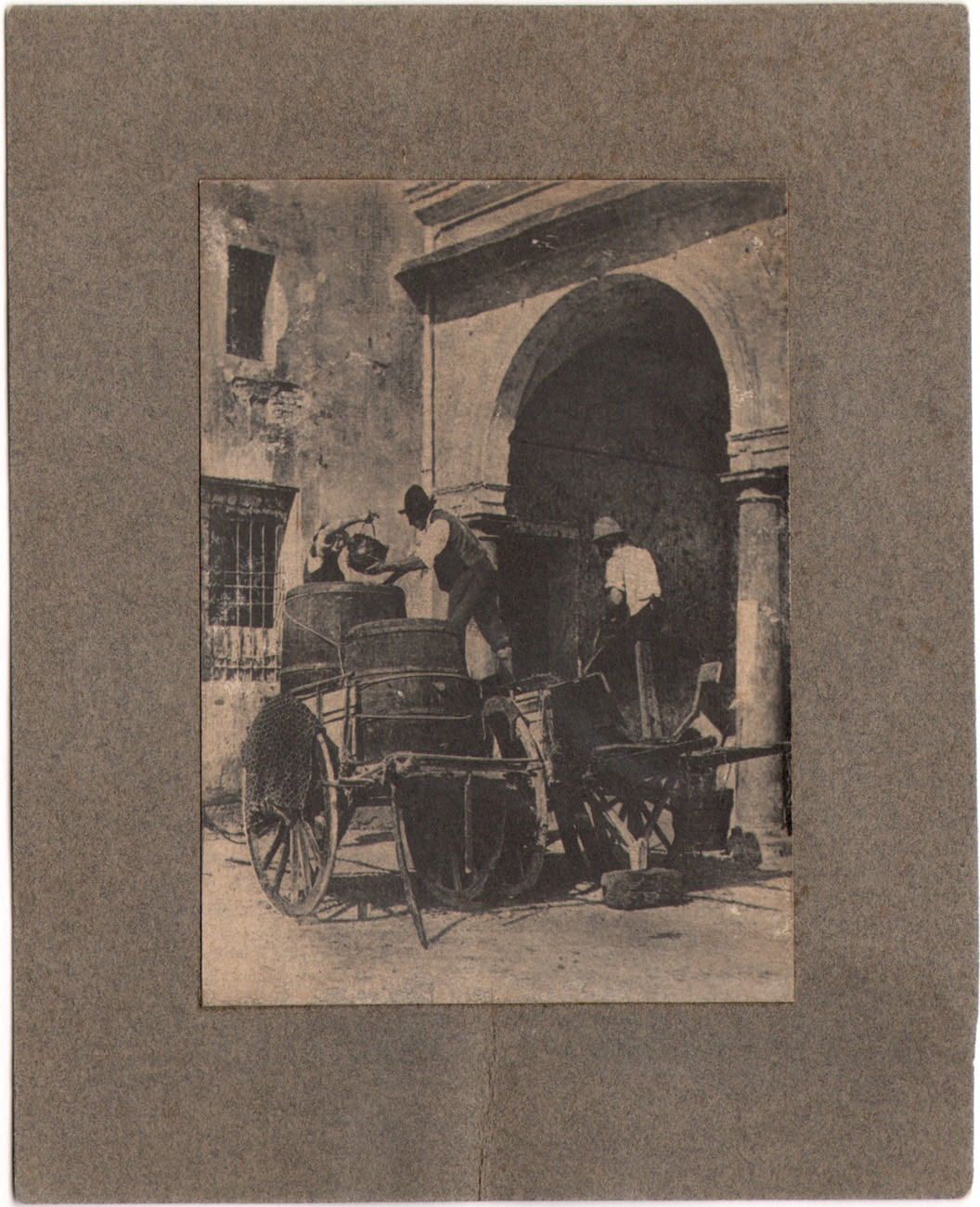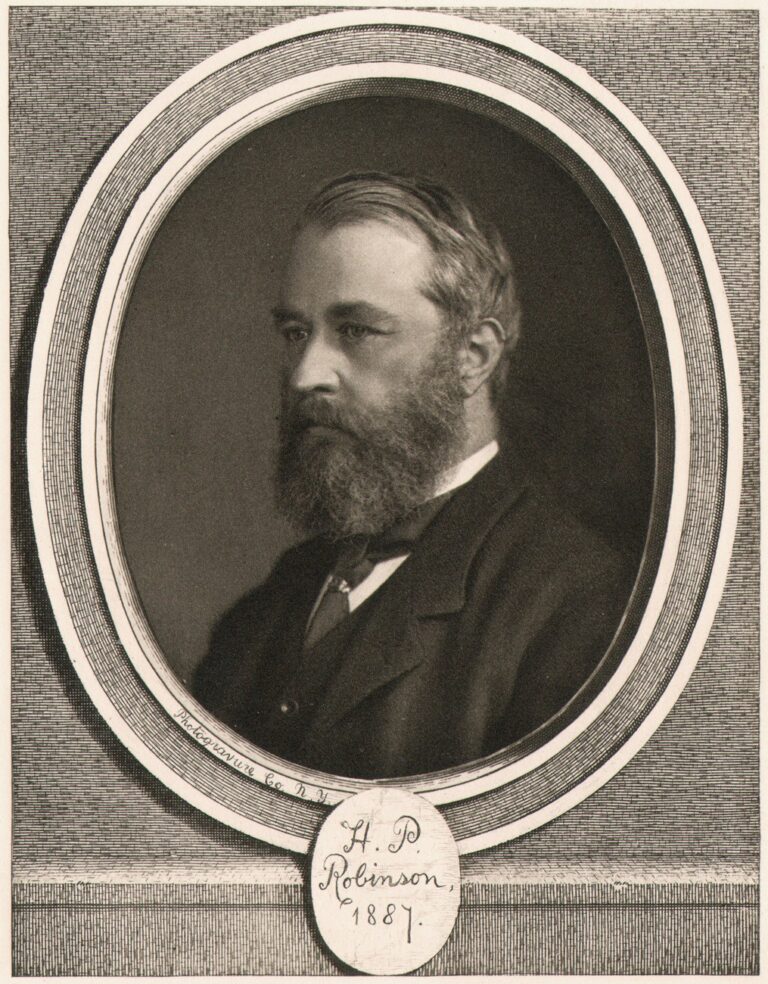
Chianti
In 1887, while Alfred Stieglitz was still a student in Berlin, he traveled extensively on the Continent soon after discovering his love of photography. Besides Venice, one of the places he visited several times around this time was the northern Lombardy region of Italy:
“Spring of 1887. Italy. Alfred Stieglitz is in Lombardy and the Veneto on one of his regular spring and autumn excursions from Berlin, accompanied as is usual by his large camera, living as is usual at modest inns, and taking photographs. He photographs in Bellagio, in the country around Mantua, and in Venice, working as if possessed.” 1.
Chianti, referring to the famous red Italian wine that is the subject of this photograph’s title, was taken in Mantua, (Mantova) perhaps in the city center and not the countryside however as evidenced by the large buildings behind the subjects. In this market setting, Stieglitz photographed a portable Chianti wine-pressing operation run from the back of a large wheeled cart. Perhaps a show for tourists? Stieglitz was convinced enough to set up his camera and record at least one exposure of the scene, reproduced five years later in 1893 as a full-page halftone in the journal he co-edited, The American Amateur Photographer. Presumably, he let his co-editor F.C. Beach or associate editor Catharine Weed Ward sum the photo up for readers:
“We present with this number a picture by Mr. Alfred Stieglitz, entitled “Chianti,” which illustrates the method of wine making as practiced in Mantua, Italy. It was made with Steinheil Aplanat 19″ focus lens f/32, Perutz plate, ¼ second exposure, pyro developer. It will be observed that the group is very nicely arranged and that the lighting is crisp and strong. It shows the old method of making wine, which is to dump the grapes into the cask, then for the man in bare feet to tread them, the grape juice falling to the bottom by gravity. The picture illustrates the man with one foot in the cask. It is said that these wine-treaders are very expert in the manipulation of their feet upon the grapes, utilizing the compressing powers of their toes with good effect. We think the picture sustains Mr. Stieglitz’s reputation as a prize winner at many of our exhibitions.” 2.
And several months later, similarly convinced his photograph could be improved with its’ reproduction in color, his own business enterprise, Manhattan’s Photochrome Engraving Company, did just that for the December 15th issue of The Photographic Times:
“CHIANTI,” by the well-known amateur photographer, Mr. Alfred Stieglitz, possesses many points of attraction to which we would call the attention of our readers. First, it is a fine piece of composition. The naturalness of the posing and the arrangement combine together to form a most artistic picture. We wish, however, to specially remark upon the excellence of the reproduction. It is printed in no less than five different colors or tints, a new process that has been perfected by the Photochrome Engraving Company. The blending of the colors is perfect and the proofs have already been much admired by some of the leading artists and publishers of this city, who consider it the finest thing of the kind that has ever been produced.” 3.
This variant of Chianti, (compared with these published versions) a later vintage print center-glued to what is believed to be a circa 1898-99 Willis & Clements Rembrandt mounting card, has the look of a deep carbon print. High magnification however reveals an extremely fine screen pattern evident mostly in the mid-tones, with the highlights exhibiting a slight yellow color, as if the print were deliberately toned. (4) It might accurately be described as a manipulated and unique screen photogravure, but too many variables exist at this time to state what process was used in its’ making. Provenance for this unique photograph is also incomplete, the only known details being it was sold in the late 1990’s to a third party at a Cowan’s Historic Americana Auction in Cincinnati, Ohio-included with an assorted box of other photographs.
1. Chapter 5: The Boy in the Dark Room: in: America And Alfred Stieglitz: A Collective Portrait: The Literary Guild: New York: p. 73
2. The American Amateur Photographer: Volume IV: New York, N.Y. : The American Photographic Publishing Company: Volume V: September, 1893: p. 415
3. Our Pictures: in: The Photographic Times and American Photographer: The Photographic Times Publishing Association: New York: Volume XXIII, December 15, 1893: p. 752
4. Or of course, yellowing due to age.
